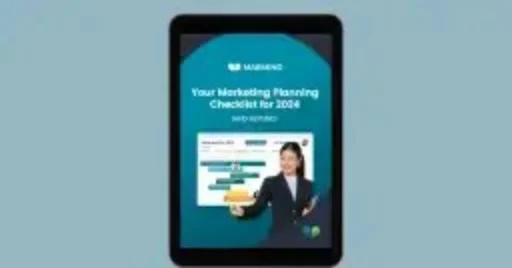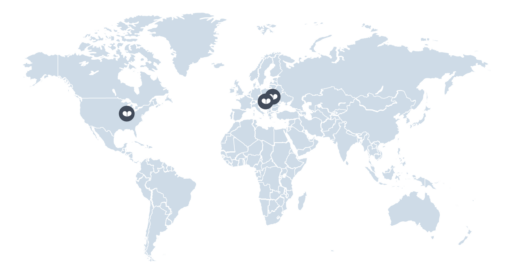Business is a lot easier when you can gaze into the future. Some businesses have terrible vision – they’re constantly caught off-guard and can’t seem to anticipate what’s to come. Other businesses are equipped with adequate vision and can dodge roadblocks but fail to stand out from the competition. Then there are the select few that have perfect vision. They’re always ahead and make the right decision at the right time as if they mastered crystal gazing.
Though it would be fantastic, albeit scary, to have such an ability, businesses with perfect vision use two methods to help them probe the future: scenario planning and business forecasting.
Sure, they don’t sound as mystical as crystal-gazing, but they’re your best bet if you want to give your business a chance to compete in today’s unpredictable market.
Scenario planning and business forecasting are often confused or used interchangeably. However, the two are distinctively different and do not have the same purpose. Let’s examine the differences between scenario planning and business forecasting to help you decide which is best for your business.
What is scenario planning?
Organizations of all sizes use scenario planning to make flexible mid and long-term plans. It empowers companies to navigate the uncertainties of the future and helps stakeholders make decisions with greater confidence and foresight. Successful scenario planning considers what happened in the past and what is happening now to propose what could happen in the future. It asks “what if” and draws a map of multiple possible futures.
Benefits of scenario planning:
– Prepares you for rapid changes
– Keeps you flexible and adaptable
– Helps you make more calculated decisions
– Acts as an early warning system
What is business forecasting?
Business forecasting is a method used by organizations to project themselves into the future by analyzing data or trends from the past and present. It’s a method that doesn’t concern itself with what could be. It uses the data collected from the past and assumes that the industry and global landscape will remain the same. It’s an effective method to help with budgeting and predicting future growth.
Benefits of business forecasting:
- Helps you envision future growth
- Gives you the data for budgeting
- Provides a blueprint for financial planning
- Increases your knowledge of market trends
What’s the difference between scenario planning and forecasting?
Forecasting and scenario planning are processes that help companies look into the future. They both consider what happened in the past and what the state of things is in the present. They also help companies make educated decisions, taking some of the guessing game out of the equation. But that’s where their similarities end.
Business forecasting is one-dimensional
It’s not designed to anticipate rapid changes. Its purpose is to showcase a company’s future if things remain the same. Therefore, it’s best used to make decisions that will help a company reach a certain level at a specific time. It’s a brilliant tool that can help you plan marketing campaigns, calculate growth, help budget future business needs, and control costs.

Scenario planning is multi-dimensional
It’s specifically designed to anticipate rapid changes. Its purpose is to look into various possible futures by asking “what if” and finding ways to respond to those uncertainties. It’s the most advanced method we have to prepare for drastic changes. It helps stakeholders make the right decisions at the right time and detect the early signs of significant market shifts.
So, which one is best?
One isn’t better than the other. It depends on what you’re trying to accomplish. Scenario planning helps prepare for major changes, and business forecasting helps plan for a best-case future.
That said, there’s no reason why companies shouldn’t use both methods simultaneously.
Questions to consider for choosing between
scenario planning or forecasting
While scenario planning has many strengths, it doesn’t necessarily make it superior to forecasting. They both have their place in business. However, knowing which can benefit your organization most is best.
Here are a few questions you can ask to help you choose between the two:
1. Is the future sure and predictable or unsure and unpredictable?
The future is a mystery. However, some things are unlikely to change. If your organization is confident that the future of your industry will look the same in the coming months, you might benefit most from business forecasting.
2. Does the future lead to one outcome or many?
If you ask yourself “what if” and gather that there can be multiple futures for your company, scenario planning is more suitable. It will allow you to foresee how the future is shaping and help you adapt to various situations quickly.

3. Do you want to plan for the short or long term?
While forecasting and scenario planning can be used for short and long-term planning, scenario planning is more adapted to help you gaze at a distant future. That’s because as time passes, things become more and more unpredictable. As a rule of thumb: think short-term with business forecasting and long-term with scenario planning.
4. Do you want to project yourself into the future or anticipate it?
It can be helpful to imagine where your company will be in the future if things remain the same as they are now. That’s how business forecasting can help you. But scenario planning may be more advantageous if you want to anticipate various possible situations.
MARMIND helps you anticipate and plan your future
MARMIND is a Marketing Resource Management (MRM) solution with all the functions you need to plan your company’s future.
It allows you to simulate your scenarios and helps you track changes to anticipate what the future may bring. With Marmind’s robust MRM, you can calculate planned, committed, and actual costs, ensuring that you never overspend.
Whether your company needs to anticipate the future with scenario planning or plan for the best outcome with business forecasting, Marmind is the all-in-one solution you need to monitor your performance in real-time.

Last thoughts
In a sense, business forecasting is a linear way to look into the future. You’re here today, and if nothing changes drastically, you’ll be there in the near future. With business forecasting, there are no “what ifs.” On the other hand, scenario planning is a complex spider web that aims to probe many possible futures. They both deal with the future, but in two distinctively different ways.
Author

Peter Fechter
Peter is Digital Marketing Manager at MARMIND and mainly responsible for website and lead management. When he's not busy creating content, he is developing new strategic approaches for campaign planning.
In this video, we show you the 5 main features of MARMIND’s budget & cost module – and how it can be used in the best way for your marketing purposes:
- Top-Down Budget Planning
- Spend Management & Forecasting (Bottom-up Basis)
- Set up reconciliations from actual costs to planned/committed costs
- How to set up scenarios
- How you can integrate budget forecasts, ROI and performance KPIs into other views and into reports











